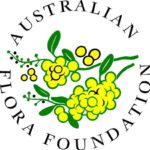Paddy Lightfoot, member of APS Newcastle Group and Director of the Australian Flora Foundation, explains current research projects.
As members know, Newcastle Group of the Australian Plants Society, as well as the Australian Plants Society NSW supports the Australian Flora Foundation with an annual donation.
 The Australian Flora Foundation is a not for profit charity which supports research into Australian plants. The Council consist of academic botanical specialists as well as three members of the Australian Plants Society – Ross Smyth-Kirk, Ian Cox and myself.
The Australian Flora Foundation is a not for profit charity which supports research into Australian plants. The Council consist of academic botanical specialists as well as three members of the Australian Plants Society – Ross Smyth-Kirk, Ian Cox and myself.
We meet three times a year at the University of Sydney. Our brief is to provide grants for research projects. This year we have approved grants for the following projects – all involving restoration of the much-degraded Australian environment. This is to a large extent due to habitat clearing with European farming practices introduced over the past two centuries plus climate change with increasing fires.
Seedling establishment for the endangered Whibley Wattle (Acacia whibleyana) –Jasmin Packer
This wattle was a new species to me. I am going to try to obtain seed from the Acacia Study Group. It grows on the Eyre peninsula in South Australia, sometimes close to salt swamps. It grows to about two metres tall. Golden pods of flower look impressive in photos. Could be a good garden plant. It is coastal so may be worth a try in suburbs close to the ocean?
Understanding seed and reproductive biology of Geijera parviflora or Wilga – Ganesha Borala Liyanage
Understanding seed biology is important for its conservation and restoration.
I remember very well the Wilga growing on my uncle’s property at Breeza on the Liverpool Plains – at present due to be cleared for a coal mine by the Chinese company Shenhua.
Wilgas are small trees or bushes found in inland parts of eastern Australia. Some farmers call it sheepbush or dogwood. It has small white flowers and is a member of the citrus family. The flowers have a citrus smell and are insect attracting. Regeneration from fresh seed has proved difficult.
It is a useful fodder tree for farmers as well as providing stock with shade.
The tree prefers full sun itself. Although slow growing it is planted in Australia and overseas as an ornamental.
Apparently First Nations peoples used the leaves as an anaesthetic for toothache!
Fire ecology and management of North Australian sandstone heath vegetation – Harry MacDermott (PhD student)
With increasing fires due to climate change and the altered fire occurrences in our north, understanding the ongoing, as well as forecasted, damage is very important for our country.
Investigating the seed biology of sedges (Cyperaceae) for the restoration of wetlands – Jenny Guerin
This is a project that should be of interest to Newcastle Group. After all we meet at The Wetlands Centre Australia (HWCA) and do our propagation in the nursery here.
An alarming statistic is that 50% of the world’s wetlands have been destroyed in the past 100 years. There are 900 nationally recognised wetlands in Australia and 64 world recognised Ramsar Sites. Hunter Wetlands Centre Australia is one of these sites! We are involved in reclaiming rugby fields for a swamp – first in the world!
You can support research too!
I am sure members will agree these are great projects and, although Newcastle Group donates annually, please feel free to make individual tax deductible donations at the website: aff.org.au.
Australian Flora Foundation, PO Box 846, Willoughby NSW 2068.
Remember 100% of donations go directly to research, and all work by the AFF Council is voluntary!
